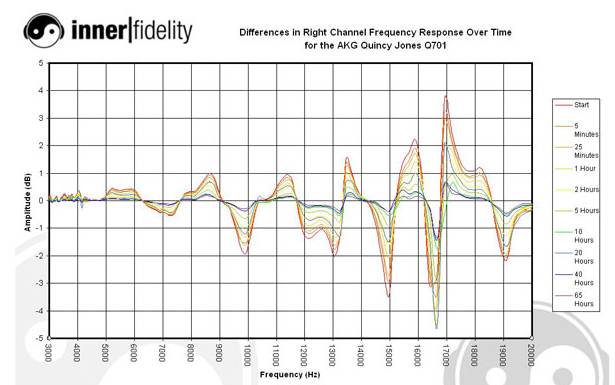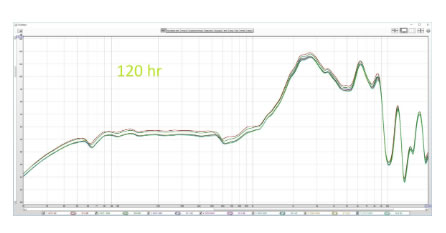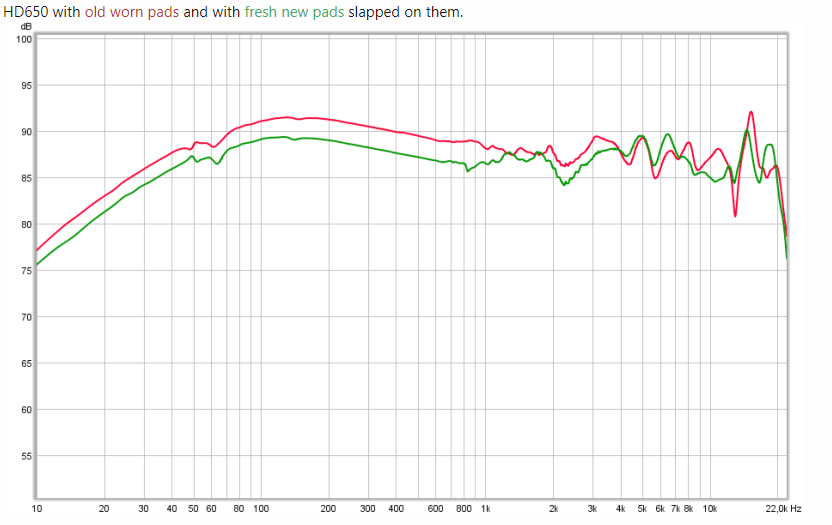- AccurateRip
- Acoustid
- AES/EBU
- AirPlay
- Amplifier
- aptX
- Audio file formats
- ASRC
- AVB
- Bit perfect jitter
- Bits: 16 or 24
- Bit perfect playback
- Bitrate
- Bluetooth
- Burn-in
- BWF
- Cables
- CDtext
- Chromecast
- Clipping
- Clock
- Codec
- Compression
- CRC
- Crossover
- Cue sheet
- DAC
- Damping
- DASH
- Digital
- Digital Room Correction
- Dither
- DLNA
- Drivers
- DoP
- DSP
- EBU R128 (loudness)
- FFT
- FireWire
- Freedb
- Gapless playback
- Generation loss
- HDMI
- Headphone listening
- Hearing
- Hires recording
- Homeplug
- I2S
- ID3
- Inter sample peak
- LDAC
- Linearity (DAC)
- Memory playback
- Music Server
- OCF
- OFC
- PCM
- Perception
- RAID
- ReplayGain
- Ripping
- RFI
- RIAA
- Router
- Sampling, up and over
- Sample Rate Conversion
- Speakers
- S/PDIF
- Storage
- Sync
- Tagging
- Toslink
- Transcoding
- UAA
- Units
- UPnP
- USB
- VST
- WiFi
- WiSA
Burn-in
One of the articles of audiophile faith is that components need to burn-in.
Even passive components like cables need it.
One of the very few trying to measure this phenomenon is Tyll Hertsens.
He did so by measuring a headphone fresh out of the box; immediately after the first test (so it had about 5 minutes on them); then after 25; then 1 hour; 2 hours; 5 hours; 10 hours; 20 hours; 40 hours; 65 hours; and finally after 90 hours.

Summary
Did I show break-in exists? No. There are too many variables still. Was it simply movement? I don't know. If I did it again to another brand new pair would I get the same results? I don't know. If I did it to an already broken in pair would I get the same results? I don't know.
What I do know is that during the course of these measurements some things changed. While the data showed only very small differences, the data was clearly above the noise, and a general trend observable. The data also showed a discontinuity around the 20 hour mark in both the FR and THD data. While, it seems to me, much of the change observed could easily be due to movement, especially in the frequencies above 5kHz, some changes seem more likely due to break-in. In particular, the changes in frequency response around the fundamental resonance of the driver at 80Hz, and in %THD+noise at the same frequency and at around 40Hz.
Evidence of Headphone Break-In? - Tyll Hertsens
RTINGS did a 120-hour Burn-in Test.
There are very small differences.

Some hard evidence here?
The observed change have very likely other reasons.
Earpads compress hence the position changes, be it on your head or on the measurement rig.
This results in a different frequency response

An example by Solderdude
A most hilarious view on burn-in by Rod Elliott.
After many exhaustive hours of listening tests, I have determined that when a cable is burned-in, it is actually ruined. No cable should be used for more than a few hours, as the stresses on the insulation and the agitation of the copper molecules cause permanent changes to the structure of the cable - these changes are invariably for the worse, and fresh unused cables can be proven by listening tests to be superior in all respects.
The characteristics of the insulation change very subtly as the cable is stressed by signal voltages, and this has an as yet unexplained effect on the stereo imaging, and in particular causes veiling of the high frequencies and a loss of presence in the upper midrange. In extreme cases, the authority of the bass also suffers, with the lower registers lacking speed and power.
All the above defects are rectified by substitution of a new set of cables - the brilliance is restored and the finer details are brought back into startling realism. Bass speed is improved tenfold by a brand new unused mains cable, and new interconnects have a profound effect on the upper frequencies where detail is paramount.
I could say all these things (I just did :-) and I would be lying through my teeth.
- Evidence of Headphone Break-In? - Tyll Hertsens
- Break-In, Part Deux - Tyll Hertsens
- The Audio Pages - Rod Elliot
- 120-hour Burn-in Test - RTINGS
- Is Headphones Break-in Real? - ASR

